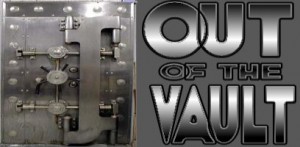
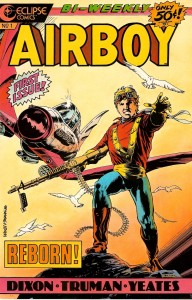 This one gets a little complicated. In the 40’s, a company called Hillman Periodicals put out a comic called Air Fighters Comics, featuring their most popular character, Airboy, along with a host of back-up characters. And then in 1986, Eclipse Comics revived pretty much much the entire Hillman stable in the pages of Airboy.
This one gets a little complicated. In the 40’s, a company called Hillman Periodicals put out a comic called Air Fighters Comics, featuring their most popular character, Airboy, along with a host of back-up characters. And then in 1986, Eclipse Comics revived pretty much much the entire Hillman stable in the pages of Airboy.
Yeah, I know, you’re doing a double-take looking at that cover, right? But your eyes are not deceiving you. It was, in fact, a biweekly comic that cost only fifty cents! But that was because you were getting only one half-length chapter every two weeks. The book was thin (I actually have those issues saved two-to-a-bag).
Airboy was about David Nelson III, son of David Nelson II (the original Airboy), the head of Nelson Aviation. When the monastery where they live is attacked by the soldiers of a South American thugocracy, killing Davy’s father, Davy takes on the mantle of Airboy and joins forces with his father’s former comrades to battle one of Airboy’s greatest foes, Misery the necromancer who keeps the souls of dead aviators trapped in his flying Airtomb. With the help of Hirota, Skywolf and the Heap (the first swamp creature hero in comics, far predating either Swamp Thing or Man Thing), Davy conquered Misery and freed the love of his father’s life, the beautiful Valkyrie (shown on the left in the iconic Dave Stevens cover from issue 5).
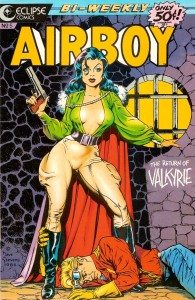 For the record, the fifty cent price didn’t last long. They made it 8 issues before adding a back-up feature to bulk up the book and more than doubling the price to $1.25. They managed to maintain the biweekly schedule for over a year, though, putting out 32 issues before switching to a normal monthly schedule with issue 33.
For the record, the fifty cent price didn’t last long. They made it 8 issues before adding a back-up feature to bulk up the book and more than doubling the price to $1.25. They managed to maintain the biweekly schedule for over a year, though, putting out 32 issues before switching to a normal monthly schedule with issue 33.
The series was written by Chuck Dixon, who co-created the concept with then-hot fan favorite Tim Truman, who was also writing and drawing the dystopian future action-adventure Scout (which I think I’ll talk about next week). The short story length dictated by the biweekly schedule meant the action was fast and furious with lots of cliffhangers, which was good. But the schedule also necessitated some inconsistency on the art, with frequent fill-ins and switching of art teams. Truman did layouts finished by Tom Yeates on the first two issues, which led to a bit of controversy when the following panel appeared.
Some readers saw the inclusion of an autographed picture of Ronald Reagan to his pal, the South American strongman who was that issue’s secondary villain, as a cheap shot at the President, which it was. Even cheaper was when they printed a letter from one reader complaining about it, after which they printed responses from Dixon and Truman and Yeates and editor-in-chief Cat Yronwode, all telling the guy how wrong he was.
So the book ended up being this weirdly uncomfortable mix of shoot-em-up action and lefty politics with really good art. Stan Woch pencilled more issues than anyone else; he had previously worked on Swamp Thing, and his work showed influences from both Steve Bissette and Berni Wrightson, but he was also really good with airplanes and other vehicles (which you may imagine would be important in a book titled Airboy) and also showed a flair for furious fighting action (like this sequence from issue #5, inked by Willie Blyberg).
The book became popular enough with readers that it sparked spin-offs like a couple of Valkyrie mini-series, a few one-shots and reprints of some old Hillman stories. But I got a little bored with it after a couple of years. The book lasted until issue 50, but I quit after issue 41.

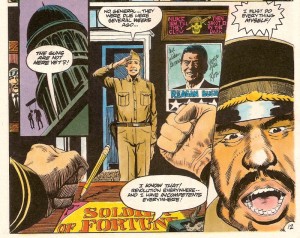
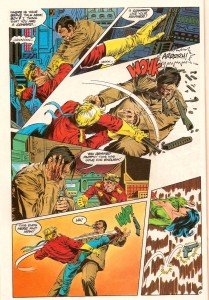



Pingback: Out of the Vault – The New Wave | Hero Go Home